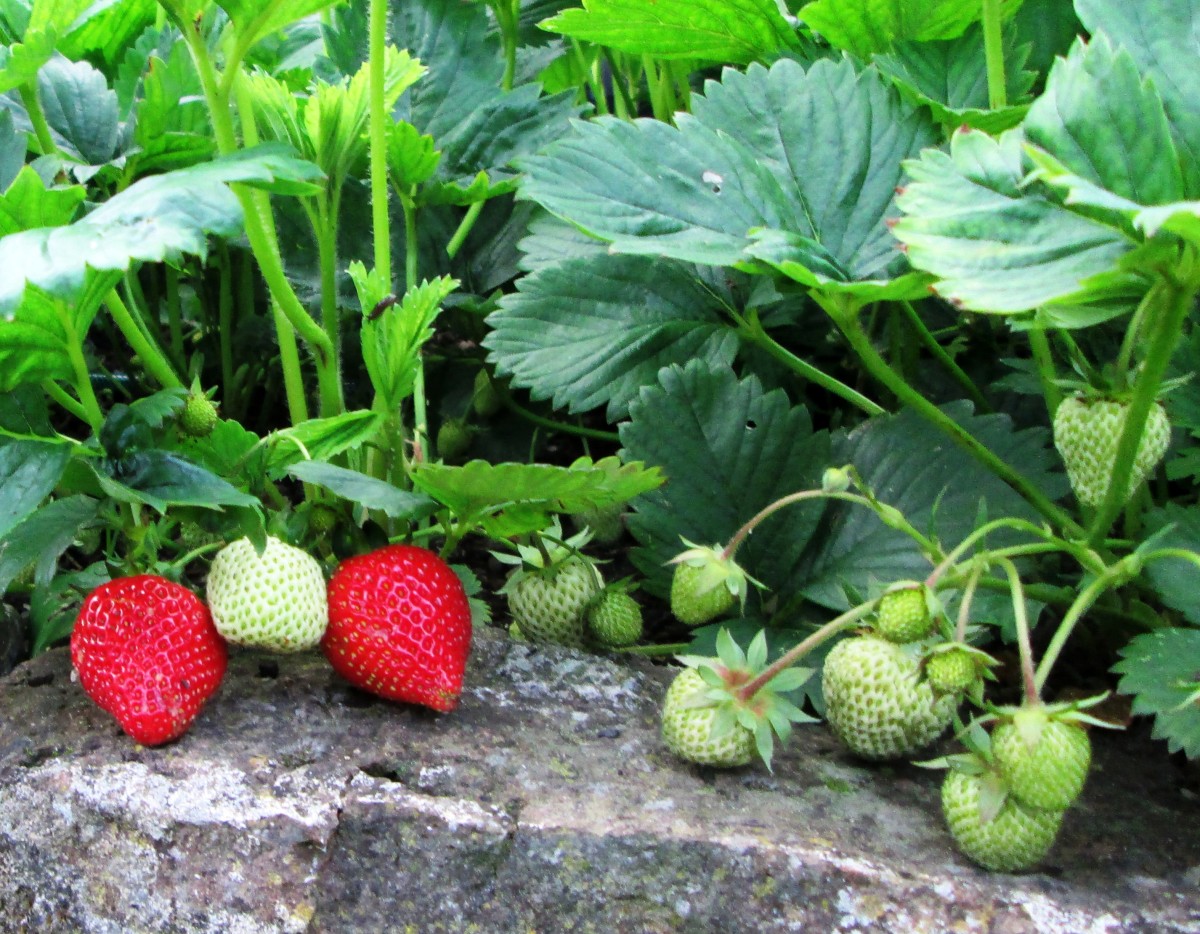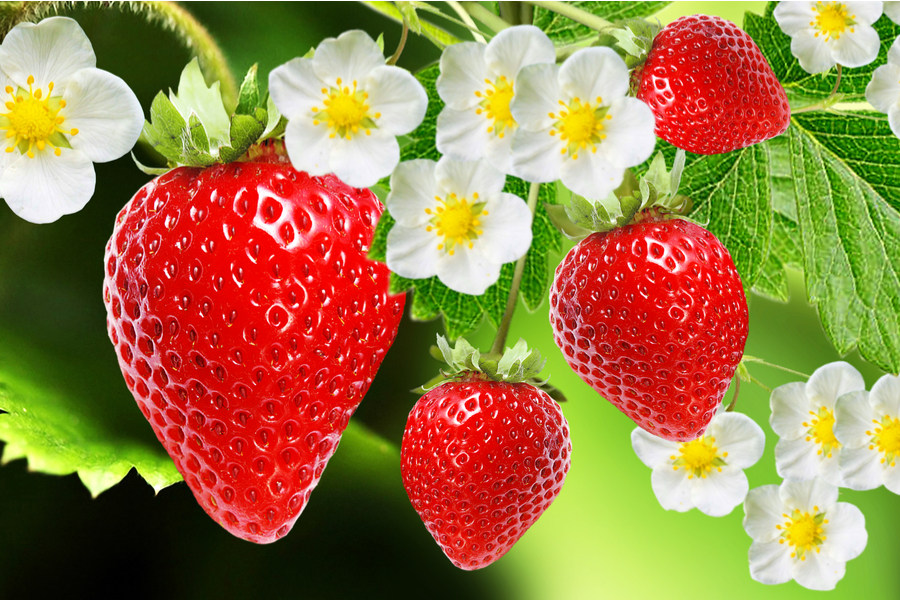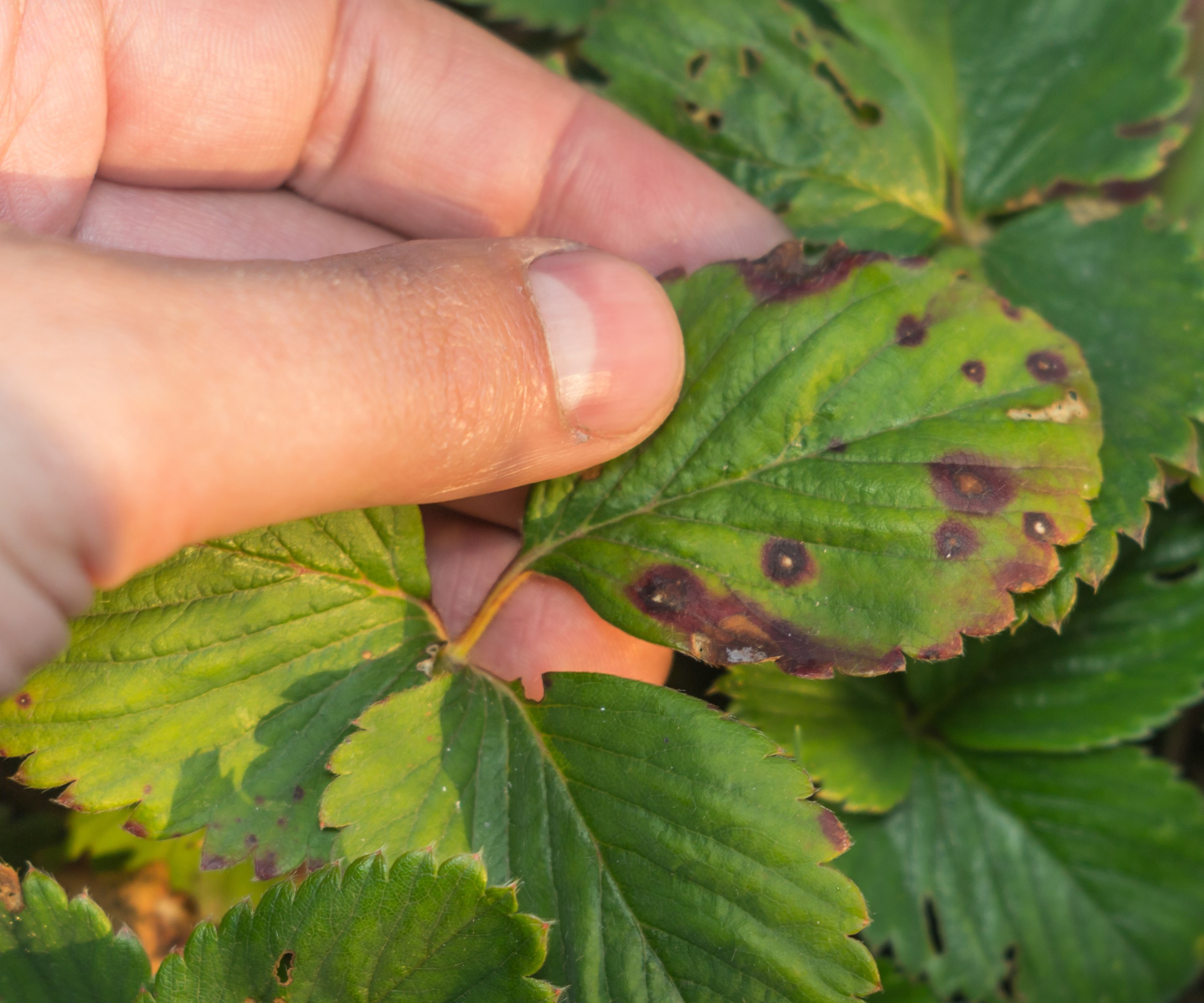Common Mistakes That Can Hinder Strawberry Growth
Strawberries are one of the most popular fruits to grow in home gardens, but many gardeners struggle to achieve a bountiful harvest. If you’re wondering why your strawberries aren’t growing, it’s likely due to one of several common mistakes. Inadequate sunlight, poor soil quality, and insufficient watering are just a few of the most common errors that can prevent strawberries from thriving.
Strawberries need full sun to produce well, so if your plants are not receiving at least six hours of direct sunlight per day, it may be impacting their growth. Additionally, strawberries prefer well-draining, rich soil with a pH between 5.5 and 6.5. If your soil is heavy clay, sandy, or lacking in essential nutrients, it can hinder strawberry growth. Insufficient watering is another common mistake, as strawberries need consistent moisture to produce fruit.
Other mistakes that can impact strawberry growth include overcrowding, poor air circulation, and inadequate fertilization. When strawberry plants are overcrowded, it can lead to reduced air circulation, increased disease susceptibility, and decreased fruit production. Poor air circulation can also contribute to disease development, so it’s essential to provide enough space between plants and ensure good air movement.
By avoiding these common mistakes, you can create an environment that promotes healthy strawberry growth and maximizes your chances of a successful harvest. Understanding the reasons why your strawberries may not be growing can help you take corrective action and enjoy a bountiful strawberry crop.
How to Create the Perfect Environment for Strawberry Growth
Creating the perfect environment for strawberry growth is crucial for a bountiful harvest. Strawberries require specific conditions to thrive, including optimal temperature, humidity, and soil requirements. By understanding these conditions and taking steps to create a strawberry-friendly environment, you can help your plants grow and produce fruit to their full potential.
Temperature is a critical factor in strawberry growth. Strawberries prefer daytime temperatures between 60°F and 70°F (15°C and 21°C) and nighttime temperatures around 50°F (10°C). Avoid planting strawberries in areas with extreme temperature fluctuations, as this can impact fruit production and plant health.
Humidity is also essential for strawberry growth. Strawberries prefer a relatively high humidity, typically above 50%. To maintain optimal humidity, consider using mulch or row covers to retain moisture and reduce evaporation. This will help create a microclimate that promotes healthy strawberry growth.
Soil quality is another vital factor in strawberry growth. Strawberries prefer well-draining, rich soil with a pH between 5.5 and 6.5. Test your soil pH and nutrient levels regularly to ensure optimal conditions for strawberry growth. Add organic matter like compost or manure to improve soil fertility and structure.
In addition to these conditions, consider using mulch, compost, and row covers to create a strawberry-friendly environment. Mulch helps retain moisture, suppress weeds, and regulate soil temperature. Compost adds essential nutrients and improves soil fertility. Row covers protect plants from extreme weather conditions and pests, promoting healthy growth and fruit production.
By creating the perfect environment for strawberry growth, you can help your plants thrive and produce a bountiful harvest. Remember to monitor temperature, humidity, and soil conditions regularly to ensure optimal growth and fruit production.
The Importance of Soil Quality and Fertilization
Soil quality and fertilization play a crucial role in strawberry growth and development. Strawberries require a well-balanced diet of nutrients to produce healthy plants and fruit. Poor soil quality and inadequate fertilization can lead to stunted growth, reduced fruit production, and increased susceptibility to pests and diseases.
To determine the nutrient levels in your soil, it’s essential to conduct a soil test. This will help you identify any nutrient deficiencies and pH imbalances that may be impacting strawberry growth. Based on the test results, you can adjust your fertilization strategy to provide the necessary nutrients for optimal growth.
Organic fertilizers, such as compost and manure, are excellent options for strawberry plants. These fertilizers release nutrients slowly, providing a steady supply of nutrients to the plants. Synthetic fertilizers, such as ammonium nitrate and potassium sulfate, can also be used, but it’s essential to follow the recommended application rates to avoid burning the plants.
In addition to fertilization, maintaining optimal soil pH is critical for strawberry growth. Strawberries prefer a slightly acidic to neutral soil pH, ranging from 5.5 to 6.5. If your soil pH is too high or too low, it can impact nutrient availability and plant growth.
Some common nutrient deficiencies that can impact strawberry growth include nitrogen, phosphorus, and potassium deficiencies. Nitrogen deficiency can cause yellowing leaves and stunted growth, while phosphorus deficiency can impact fruit production and plant development. Potassium deficiency can lead to weak and brittle plants, making them more susceptible to pests and diseases.
By understanding the importance of soil quality and fertilization, you can take steps to create a nutrient-rich environment that promotes healthy strawberry growth. Regular soil testing and fertilization can help ensure optimal nutrient levels, leading to a bountiful harvest of delicious strawberries.
Watering Strategies for Optimal Strawberry Growth
Watering is a critical aspect of strawberry growth, and it’s essential to get it right. Strawberries need consistent moisture levels to produce healthy plants and fruit. However, overwatering can be detrimental to strawberry growth, leading to root rot and other problems.
To water strawberries effectively, it’s essential to understand the soil moisture levels. Check the soil regularly by inserting your finger into the soil up to the knuckle. If the soil feels dry, it’s time to water. If it’s already moist, wait another day or two before watering again.
Drip irrigation systems are an excellent way to water strawberries. These systems deliver water directly to the roots of the plants, reducing evaporation and runoff. They also help to prevent overwatering, which can be a common problem with traditional sprinkler systems.
Another effective way to water strawberries is to use soaker hoses. These hoses are designed to release water slowly, providing a steady supply of moisture to the plants. They’re also easy to install and can be placed directly on the soil surface.
It’s also essential to avoid getting water on the leaves and flowers of the strawberry plants. This can lead to fungal diseases and other problems. Instead, focus on watering the soil around the plants, allowing the water to soak in and reach the roots.
In addition to these watering strategies, it’s also important to consider the time of day when watering strawberries. Avoid watering during the hottest part of the day, as this can cause the water to evaporate quickly. Instead, water in the early morning or evening, when the sun is not as intense.
By following these watering strategies, you can help to promote healthy strawberry growth and maximize your chances of a bountiful harvest. Remember to monitor soil moisture levels regularly and adjust your watering schedule accordingly.
Pest and Disease Management for Healthy Strawberries
Pests and diseases can be a significant threat to strawberry growth and production. Aphids, slugs, and powdery mildew are just a few of the common pests and diseases that can affect strawberries. To prevent and manage these issues, it’s essential to use a combination of organic and integrated pest management (IPM) methods.
Aphids are small, soft-bodied insects that can cause curled or distorted leaves and reduce fruit production. To control aphids, use neem oil or insecticidal soap, and introduce natural predators like ladybugs or lacewings. Slugs are another common pest that can cause significant damage to strawberry plants. Use copper tape or crushed eggshells to deter slugs, and hand-pick them at night when they are most active.
Powdery mildew is a fungal disease that can cause a white, powdery coating on the leaves and stems of strawberry plants. To prevent powdery mildew, use a combination of good air circulation, water management, and fungicides. Remove any infected leaves or stems, and treat the plants with a fungicide like sulfur or copper.
Other common pests and diseases that can affect strawberries include spider mites, whiteflies, and botrytis. To manage these issues, use a combination of cultural controls, biological controls, and chemical controls. Cultural controls include practices like pruning, watering, and fertilizing, while biological controls include introducing natural predators or parasites. Chemical controls include using pesticides or fungicides, but these should be used as a last resort.
Integrated pest management (IPM) is a holistic approach to managing pests and diseases. It involves using a combination of cultural, biological, and chemical controls to minimize the use of chemical pesticides and maintain a healthy ecosystem. By using IPM methods, you can reduce the risk of pest and disease problems and promote healthy strawberry growth.
Regular monitoring is also essential for detecting pest and disease problems early. Check your strawberry plants regularly for signs of pests or diseases, and take action promptly to prevent the problem from spreading. By being proactive and using a combination of organic and IPM methods, you can keep your strawberry plants healthy and productive.
Pruning and Training for Maximum Strawberry Yield
Pruning and training are essential techniques for maximizing strawberry yield and promoting healthy plant growth. By removing dead or diseased leaves and flowers, and training the plants to produce more fruit, you can encourage your strawberry plants to produce more fruit and grow more vigorously.
Pruning strawberry plants involves removing any dead or diseased leaves or flowers, as well as any weak or spindly growth. This helps to promote healthy growth and prevent the spread of disease. Use clean and sharp pruning tools to avoid spreading disease, and make cuts just above a leaf node to encourage new growth.
Training strawberry plants involves providing support for the plants as they grow, and encouraging them to produce more fruit. You can use strawberry clips or straw to support the plants, and encourage them to produce more fruit by removing any weak or spindly growth. This helps to promote healthy growth and maximize fruit production.
There are several different pruning and training techniques that you can use to maximize strawberry yield, including the “mound” system and the “hill” system. The mound system involves creating a mound of soil around the base of the plant, and training the stems to grow up and over the mound. The hill system involves creating a hill of soil around the base of the plant, and training the stems to grow up and over the hill.
Regardless of the pruning and training technique you use, it’s essential to monitor your strawberry plants regularly and make adjustments as needed. This will help to ensure that your plants are growing and producing fruit optimally, and that you’re getting the maximum yield from your strawberry patch.
By pruning and training your strawberry plants regularly, you can promote healthy growth and maximize fruit production. This will help to ensure that you’re getting the most out of your strawberry patch, and that you’re enjoying a bountiful harvest of delicious strawberries.
Common Strawberry Varieties and Their Growth Requirements
There are several popular strawberry varieties, each with its own unique growth requirements and characteristics. Understanding these differences can help you choose the best variety for your climate and growing conditions, and ensure optimal growth and fruit production.
Day-neutral strawberries are a popular variety that produces fruit continuously throughout the growing season. They are ideal for warm climates and can thrive in a wide range of soil types. Ever-bearing strawberries, on the other hand, produce multiple crops of fruit throughout the growing season, but may require more maintenance and care.
June-bearing strawberries are a classic variety that produces a single large crop of fruit in the spring. They are ideal for cooler climates and require a period of winter chill to induce flowering. These varieties are often more sensitive to temperature and moisture fluctuations, but can produce high-quality fruit with proper care.
Other popular strawberry varieties include Albion, Camarosa, and Ventana. Albion strawberries are known for their high yields and sweet flavor, while Camarosa strawberries are prized for their large fruit size and disease resistance. Ventana strawberries are a popular choice for warm climates, with high yields and excellent flavor.
When choosing a strawberry variety, consider factors such as climate, soil type, and desired fruit characteristics. It’s also essential to check the specific growth requirements for each variety, including temperature, moisture, and fertilization needs.
By selecting the right strawberry variety for your growing conditions, you can ensure optimal growth and fruit production. With proper care and maintenance, you can enjoy a bountiful harvest of delicious strawberries from your very own strawberry patch.
Troubleshooting Common Strawberry Growth Issues
If you’re experiencing problems with your strawberry plants, don’t worry There are many common issues that can be easily addressed with a little troubleshooting. In this section, we’ll cover some of the most common strawberry growth issues and provide solutions and recommendations for addressing them.
Slow growth is a common issue that can be caused by a variety of factors, including inadequate sunlight, poor soil quality, and insufficient watering. To address slow growth, make sure your strawberry plants are receiving at least 6 hours of direct sunlight per day, and adjust your watering schedule to ensure consistent moisture levels.
Yellowing leaves can be a sign of nutrient deficiency or overwatering. Check your soil pH and nutrient levels, and adjust your fertilization schedule as needed. Also, make sure not to overwater your strawberry plants, as this can cause the leaves to turn yellow and drop off.
Poor fruit production can be caused by a variety of factors, including inadequate pollination, poor soil quality, and insufficient watering. To address poor fruit production, make sure your strawberry plants are receiving adequate pollination, either from bees or other pollinators, or from hand-pollination. Also, adjust your watering schedule to ensure consistent moisture levels, and fertilize your strawberry plants regularly to promote healthy growth and fruit production.
Other common strawberry growth issues include pests and diseases, such as aphids, slugs, and powdery mildew. To address these issues, use organic or integrated pest management (IPM) methods, such as introducing natural predators or using organic pesticides.
By troubleshooting common strawberry growth issues, you can identify and address problems early on, and promote healthy growth and fruit production. Remember to monitor your strawberry plants regularly, and adjust your care and maintenance schedule as needed to ensure optimal growth and fruit production.




:strip_icc()/How-To-Fertilize-Strawberries-890913440-2b022e910f0d4b679561c9e3ed2ae1fa.jpg)




